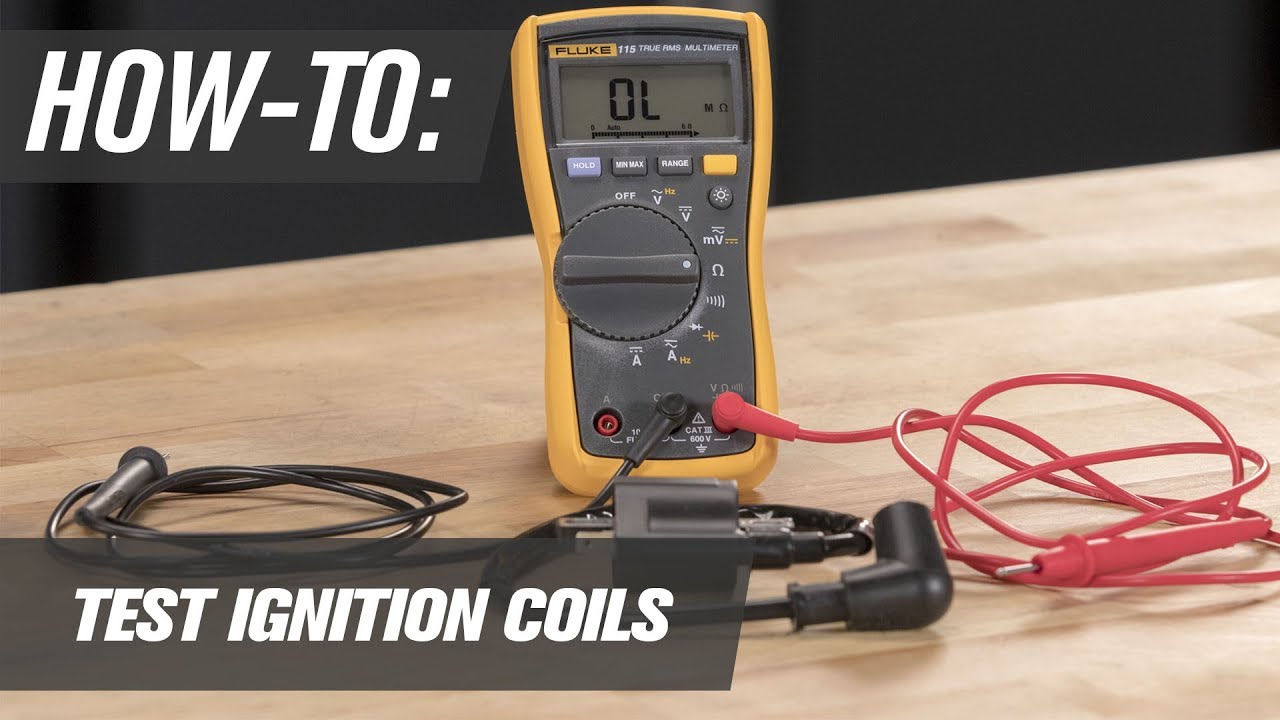It’s common for motorcycle owners to encounter choke issues if they don’t regularly maintain their bike or use it in extreme temperatures.
So, what are the causes and fixes for motorcycle won’t run without choke? A dirty or clogged carburetor, a faulty ignition system, or a malfunctioning fuel pump cause the issue. To fix these issues, you can try cleaning or rebuilding the carburetor. If necessary, you will also need to test and replace ignition components or the fuel pump.
In the following sections, we’ll provide step-by-step instructions for diagnosing and fixing common causes of this problem. Whether you’re a seasoned mechanic or a part-time rider, this information will be valuable in getting your motorcycle back on the road.
What is the Choke on a Motorcycle?
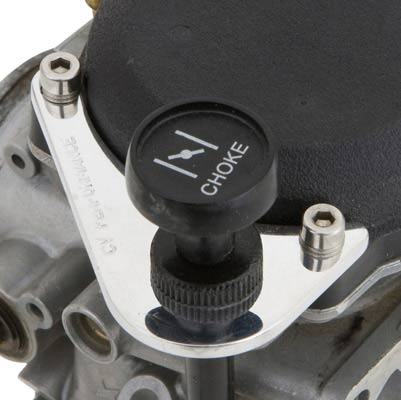
The choke is a lever or button that restricts airflow into the carburetor, allowing for a richer fuel-to-air mixture. This is necessary when starting a cold engine, as it helps the engine to warm up and reach operating temperature more quickly.
When the engine is warm, the choke can be turned off to allow for a normal fuel-to-air mixture. This is necessary for the engine to run smoothly and efficiently.
There are two types of chokes.
- Manual chokes are the most common, requiring the rider to manually engage and disengage the choke by pulling a lever or pressing a button.
- Automatic chokes are less common and are designed to engage and disengage based on the engine’s temperature automatically.
An Overview of Why Motorcycle Won’t Run Without Choke: Causes and Fixes
Here is a table illustrating the causes and fixes of the problem:
| Cause | Fix |
| Dirty or clogged carburetor | Clean or rebuild the carburetor |
| Faulty ignition system | Test and replace ignition components as needed |
| Malfunctioning fuel pump | Test and replace the fuel pump if necessary |
| Dirty Air filter | Clean or replace it |
| Cold weather | Heat up your engine. |
Potential Causes of a Motorcycle Not Running Without the Choke
Some of the most common causes of this problem include:
1. Dirty or Clogged Carburetor
If the carburetor on your motorcycle is dirty or clogged, it can restrict the flow of fuel and air to the engine, causing it to run poorly or not start at all. This is especially likely if you don’t regularly clean and maintain your carburetor or ride your motorcycle in dusty or dirty conditions.
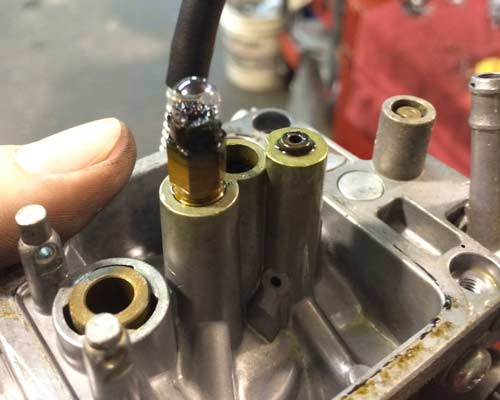
2. Faulty ignition System
This can include issues with the spark plugs, ignition coils, or other components. If any of these components are malfunctioning or damaged, the engine may not start or run properly when the choke is not engaged.
3. Malfunctioning Fuel Pump
The fuel pump delivers fuel from the gas tank to the carburetor. And if it is not functioning properly, the engine may not start or run smoothly. Various issues, such as a clogged fuel filter, a damaged fuel line, or a faulty fuel pump, can cause this.
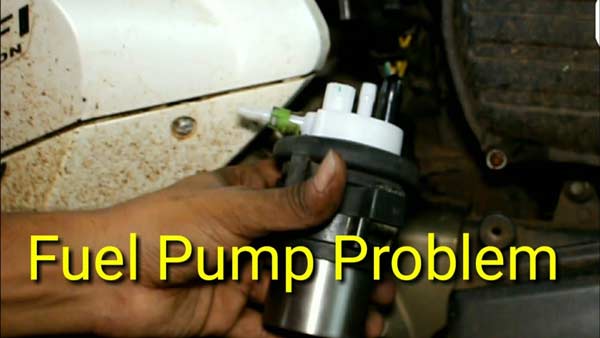
4. Dirty Air Filter
The air filter is critical to your motorcycle’s fuel system. It helps to remove dirt, dust, and other contaminants from the air before it enters the carburetor. If the air filter becomes dirty or clogged, it can restrict airflow to the carburetor. This can make it harder for the engine to get the air it needs.
5. Cold Weather
Here is how cold weather can affect a motorcycle and cause it to need the choke:
- Cold temperatures can make it harder for the engine to warm up: When it is cold outside, the engine and other components of your motorcycle may take longer to warm up and reach the operating temperature
- Causes the fuel to flow more slowly or less efficiently: In cold weather, the fuel in your motorcycle’s fuel tank and fuel lines may become thicker and more sluggish. It can make it harder for the engine to get the fuel it needs to run. Without the choke, the engine won’t start.
Troubleshooting a Motorcycle That Won’t Run Without the Choke
Here are some steps you can follow to diagnose and fix a motorcycle that won’t run without the choke:
Step 1. Check the Carburetor
The first thing you should do is visually inspect it for any dirt, debris, or clogs that may be restricting the flow of fuel and air. If you see any dirt or debris, you can try cleaning the carburetor with a carburetor cleaner or a carburetor rebuild kit.
If the carburetor is severely clogged or damaged, you may need to replace it entirely.
Step 2. Test the ignition System
Use a multimeter to measure the voltage and resistance of the spark plugs, ignition coils, and other components. Replace any damaged components to fix the issue. You can watch this video to follow up.
Step 3. Check the Fuel Pump
Check the fuel pressure with a fuel pressure gauge, or visually inspect the fuel pump and fuel lines for any signs of damage or clogs. If the fuel pump is faulty or damaged, repair or replace it.
Step 4. Clean or Replace your Air Filter
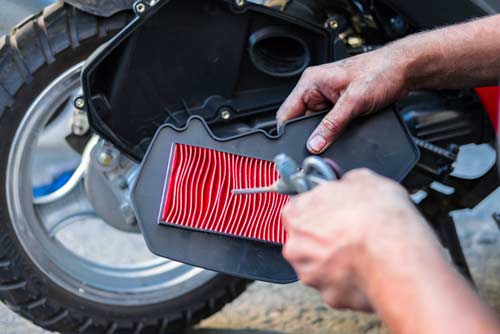
Start by locating it. Depending on the make and model of your motorcycle, the air filter may be located in different places. Sometimes, it may be inside the air box (usually under the seat or behind the engine). In other cases, it may be located in a separate housing or enclosure.
Clean all the dirt and debris. If it’s beyond cleaning, replace it with a new one.
How To Start A Motorcycle In Cold Weather Without Choke
Here are a few tips to help you start your motorcycle without a choke in cold weather:
Step 1. Use Cold Weather Starting Fluid or Fuel Line Antifreeze
Cold weather starting fluids and fuel line antifreeze are specially formulated to help the fuel flow more easily in cold temperatures. This can make it easier to start your motorcycle.
Thus, these products can be added to your fuel tank or sprayed directly into the carburetor to help improve the fuel-to-air mixture and make starting your motorcycle easier.
Step 2. Park in a Warm, Sheltered Area
If possible, try to park your motorcycle in a warm, sheltered area when it is not in use. This can help protect the engine and other components from the cold, making it easier to start your motorcycle in the morning.
For example, you could park your motorcycle in a garage or other enclosed space or use a motorcycle cover to protect it from the elements.
Step 3. Warm up the Engine before Starting
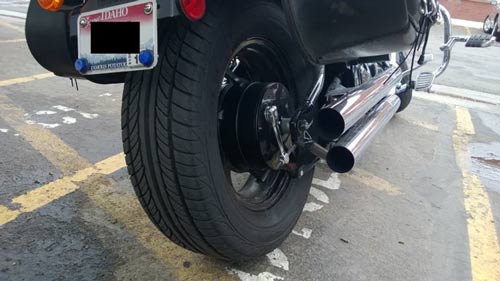
Before starting your motorcycle, try to warm up the engine by pushing it around or by using a battery-powered engine warmer. This can help loosen up the oil and other fluids. Just be sure to avoid revving the engine or letting it idle for too long, as this can cause the engine to overheat and potentially damage it.
FAQs
Here are a few frequently asked questions that may come up while troubleshooting and fixing a motorcycle that won’t run without the choke:
Q: Should I Try to Fix the issue Myself or Take my Motorcycle to a Mechanic?
This ultimately depends on your level of experience and comfort working on your motorcycle and the issue’s complexity. If you have some basic mechanical skills and the necessary tools, you may be able to troubleshoot and fix the issue yourself.
Q: Can I Ride my Motorcycle with the Choke on All the Time?
In general, riding your motorcycle with the choke on is not recommended all the time. The choke is designed to be used only when starting a cold engine and should be turned off once it is warm.
Thus, riding with the choke on all the time can cause the engine to run poorly or inefficiently. It can also lead to increased fuel consumption and wear on the engine.
Conclusion
The above information about motorcycle won’t run without choke: causes and fixes, has answered all your questions. To avoid this issue in the future, keep your bike in the best shape by regularly performing preventive maintenance.
This can include cleaning and maintaining the carburetor and replacing the spark plugs and ignition coils as needed. Also, check the fuel pump and fuel lines for any signs of wear or damage. If anything is dirty or worn out, replace and clean it as early as possible.
